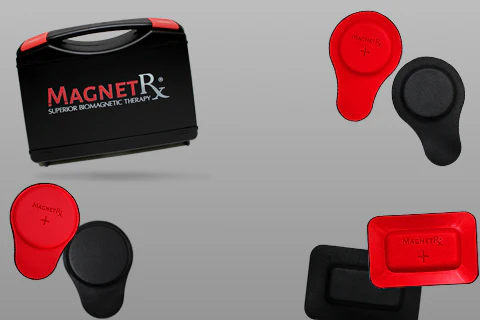Biomagnetic pair therapy, also known as medicinal biomagnetism, is a complementary and integrative medicine approach that has gained increasing attention in recent years. Developed by Mexican physiotherapist Isaac Goiz Durán in the 1980s, this therapy is based on the concept of “biomagnetic pairs” – pairs of opposite magnetic charges that are believed to indicate and treat various health conditions.
The Principles of Biomagnetic Pair Therapy
The core principle of biomagnetic pair therapy is that imbalances in the body’s pH levels can lead to the formation of these biomagnetic pairs, which in turn are associated with specific pathologies. The therapy involves using a biomagnetic or bioenergetic scanning technique to identify these pairs, and then applying therapeutic magnets of the appropriate polarity to the corresponding areas of the body to restore balance.
Potential Applications and Research Findings
While biomagnetic pair therapy is not yet widely recognized or integrated into mainstream healthcare, some research has suggested potential benefits in areas such as:
- Pain management, particularly for conditions like rheumatoid arthritis.
- Improving sleep quality and reducing symptoms of insomnia.
- Complementary treatment for depression, potentially through mechanisms similar to transcranial magnetic stimulation.
- Possible anti-cancer effects, though more research is needed in this area.
Challenges and Considerations
Despite these promising findings, biomagnetic pair therapy faces several challenges, including:
- Limited scientific understanding of the underlying mechanisms
- Lack of standardization in diagnostic and treatment protocols
- Ongoing debate around the validity and reliability of the biomagnetic pair concept
- Limited integration into conventional healthcare systems in many countries
Scientific Evidence Behind Biomagnetic Pair Therapy
The scientific evidence supporting biomagnetic pair therapy is a topic of ongoing research and discussion. While some studies and practitioners advocate for its efficacy in treating various health conditions, including infectious diseases like typhoid fever, other sources express skepticism regarding its effectiveness.
- Positive Evidence: A pilot study on Biomagnetic Pair Therapy (BPT) for typhoid fever showed promising results. In this study, patients with laboratory-documented typhoid fever were treated with BPT, resulting in most participants retesting as negative for Salmonella typhi and reporting symptomatic clinical improvement.
- Skeptical Views: Some sources, like a medical policy document, express skepticism about the clinical role of biomagnetic therapy. They state that there is no scientific basis to conclude that biomagnetic therapy can relieve pain or influence the course of any disease or condition. Randomized studies have shown no significant beneficial effects from magnetic therapy for various conditions, indicating that further investigation is warranted to determine its efficacy.
- Need for Further Research: While there are positive indications of the potential benefits of biomagnetic pair therapy, the scientific community emphasizes the need for more extensive and rigorous studies to establish its efficacy conclusively. The therapy’s mechanisms of action, standardization of protocols, and integration into conventional healthcare systems are areas that require further exploration and validation.
Conclusion
In conclusion, while there are studies and anecdotal evidence supporting the effectiveness of biomagnetic pair therapy for certain conditions, the overall scientific consensus remains cautious, highlighting the need for more robust research to validate its therapeutic benefits comprehensively.
As a complementary and integrative approach, biomagnetic pair therapy warrants further exploration and research to better understand its potential applications, mechanisms of action, and overall efficacy. With an open-minded and evidence-based approach, this therapy may offer a promising avenue for addressing various health conditions in a holistic manner.

